The Carnival in Galicia, known in Galician as Entroido, is a celebration of colors, traditions, gastronomy, and unique characters. It is one of the most important festivals, with a large component of satire, catharsis, subversion, and originality. Without undermining Venice or Las Palmas de Gran Canaria, the characters of the Carnival in Galicia will surprise you, make you enjoy and… run! In this article, we will talk about the different carnival characters of Galicia, which you can meet if you take some route of the Camino de Santiago during the Entroido.
A bit about the history of Carnival and Entroido
The origin of Carnival and Entroido is lost in the mists of time, and there are several theories dating back many centuries. Everything points to it being a cultural manifestation of archaic peoples that survives and mixes and adapts in Roman times.
In the Middle Ages, it fits within the Christian liturgical calendar as the period before Lent, starting forty days before Easter. This calculation was established by Emperor Constantine the Great in 325 AD. It would be a period in which the faithful are allowed to enjoy before the rigors of Lent, and the subsequent Holy Week.
In Galicia, the Entroido is a deeply rooted celebration, and if you want to know more about its history, we recommend that you read this article.
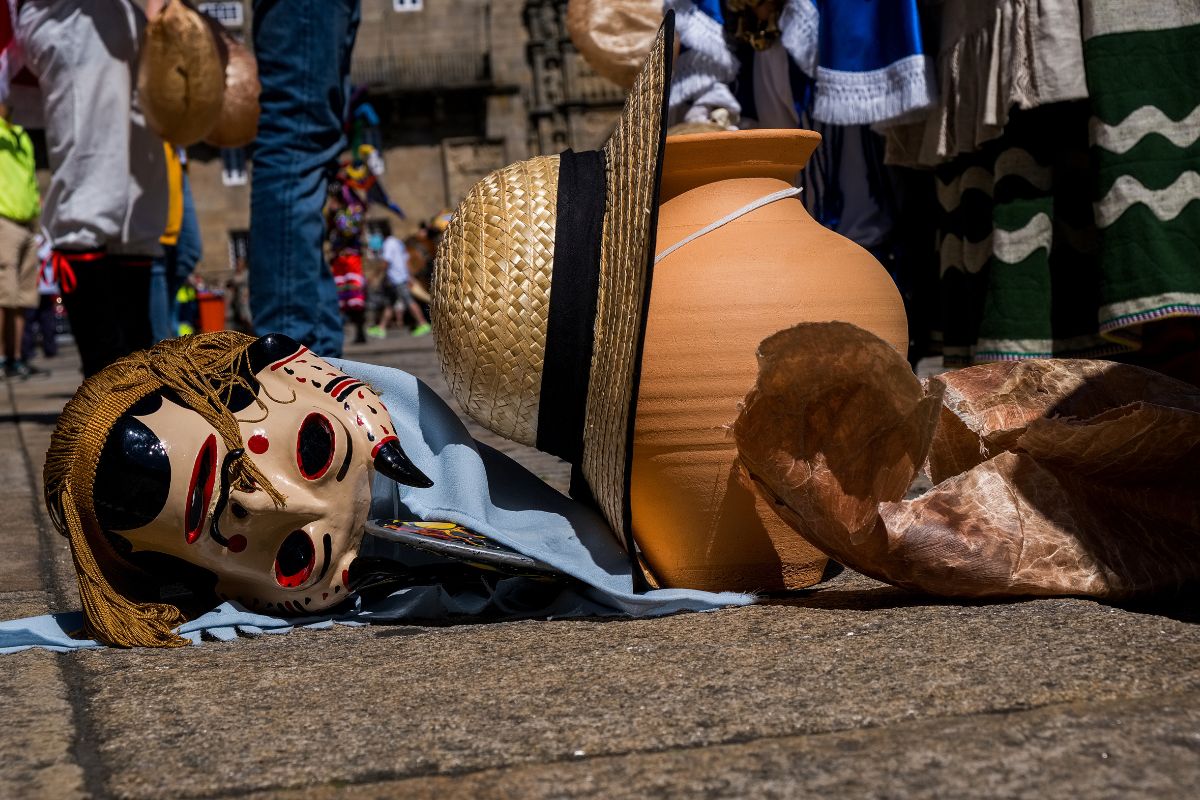
Entroido mask in Galicia.
Where does the word “entroido” come from?
The term “entroido” is first found in a text from 1229 preserved in the monastery of Sahagún. Its origin comes from the Latin introitus, which means “introduction,” that is, proximity to the Lenten period.
The best entroidos and characters of Carnival in Galicia
Celebrated throughout Galicia, the entroido have different derivations of the name and different characters. The most famous are celebrated in the province of Ourense, and by traveling the Sanabrian Way you can enjoy them. Shall we walk through Galicia to meet them?
The Cigarróns of Verín
In Verín, the Entroido is a National Tourist Interest Festival, and its main character is the Cigarrón. The legend remembers the Cigarróns as tax collectors, and if you met one, you had to invite them for a drink in a tavern. They wear a mask consisting of a painted wooden face mask with prominent eyebrows, rosy cheeks, a large mustache, and a cynical smile. It is adorned with a tin mitre decorated with plant and animal motifs, among others. The attire includes a white shirt with a tie, a short silk jacket with decorations, a belt with six large cowbells, short trousers, and white stockings. Like other characters of the Carnival in Galicia, they carry a whip while roaming the village to intimidate people.
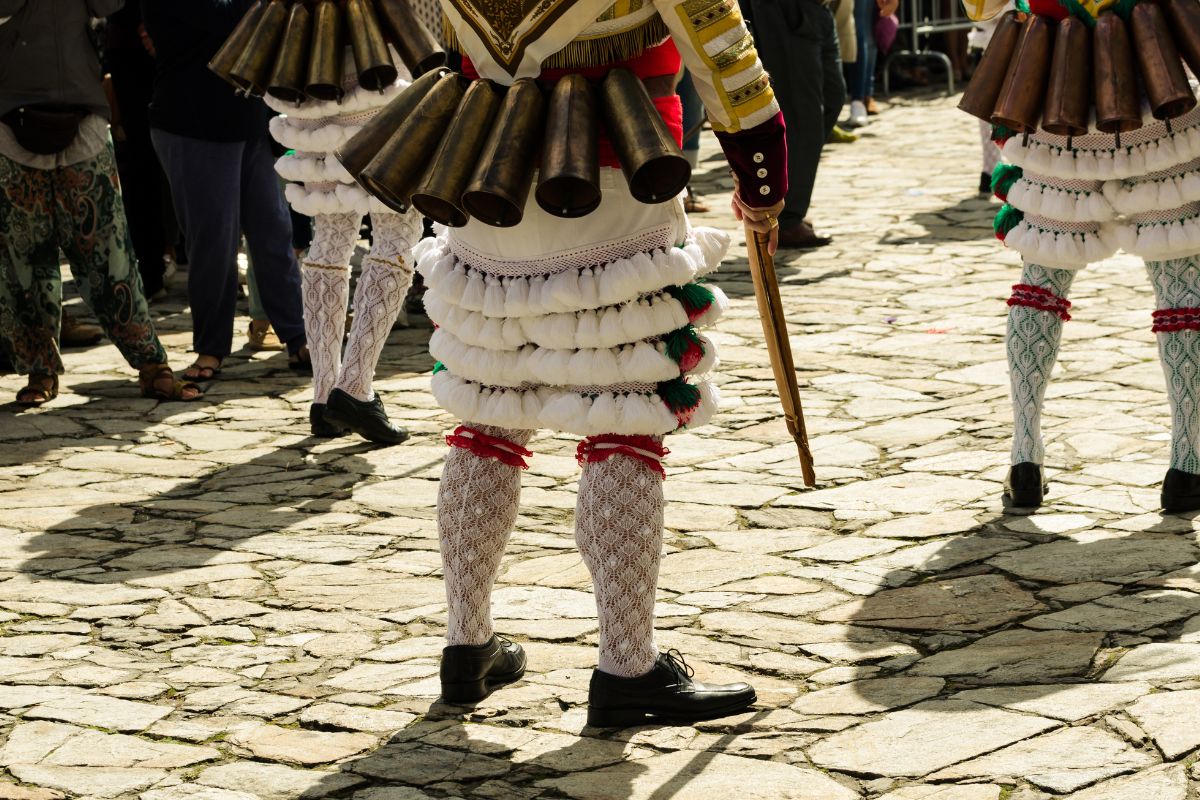
Cigarrón of Verín with its cowbells, a classic character of the Carnival in Galicia.
The Pantallas of Xinzo de Limia
In Xinzo de Limia, the Entroido is an International Tourist Interest Festival, and the protagonist character is the Pantalla. The typical costume includes a white shirt and trousers, a red cape and scarf, black leggings and shoes, and a red waistband with bells. The distinctive element is the dry and inflated cow bladders they carry in their hands. These characters, known for their dull sound and intimidating jumps, hit the bladders against each other and ring the bells on their waist. Their function is to ensure that no one walks the streets without a costume, with penalties of inviting to wine those who do not comply. The mask or pantalla, which gives the outfit its name, is made of cardboard, newspaper, felt, flour, water, and paint.
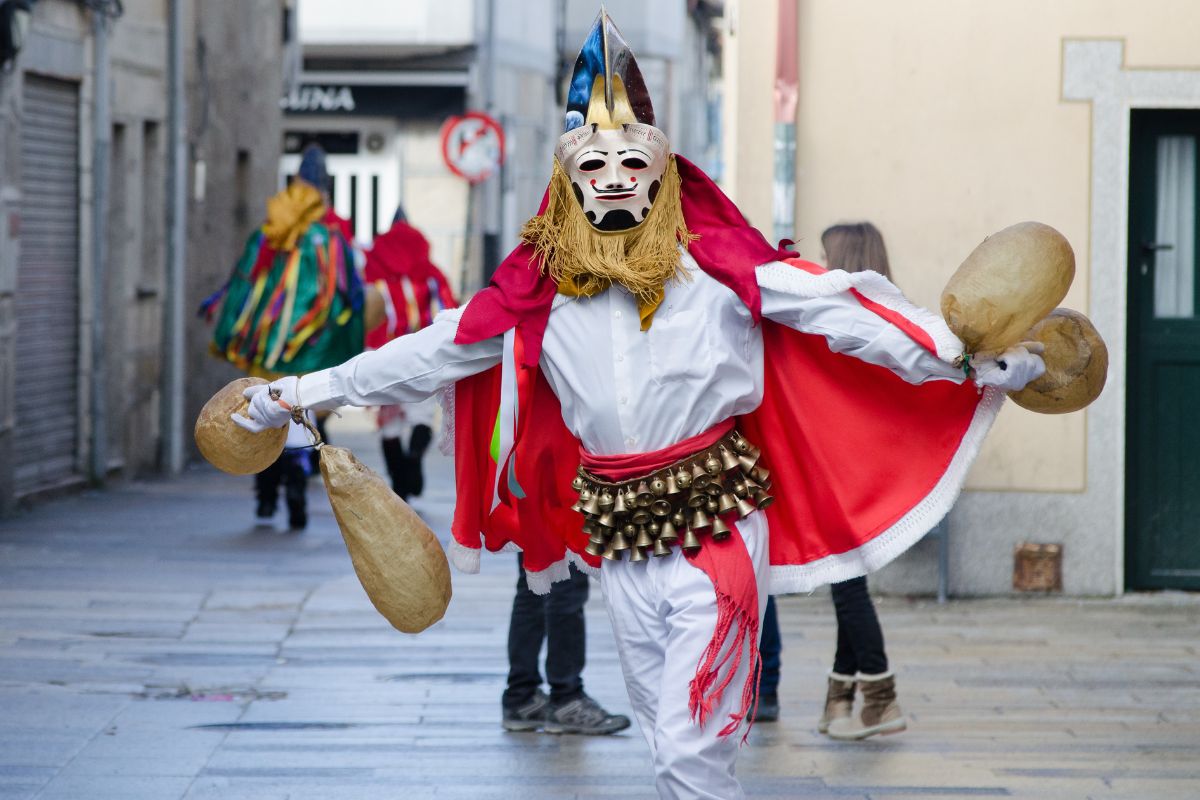
Pantalla at the Entroido in Xinzo de Limia.
The Peliqueiros of Laza
In Laza, the Peliqueiros are central figures of the Entroido, with costumes similar to the Cigarrón and also related to tax collection. They also have in common that their entire outfit can weigh about 25 kilograms. Their presence is imposing on the streets, with their expressive masks with an animal tail, and they represent authority and mockery at the same time. If you do not go in disguise to Laza, it is best that you run, as these characters whip those who do not dress up. You can insult them, but not touch or stain them.
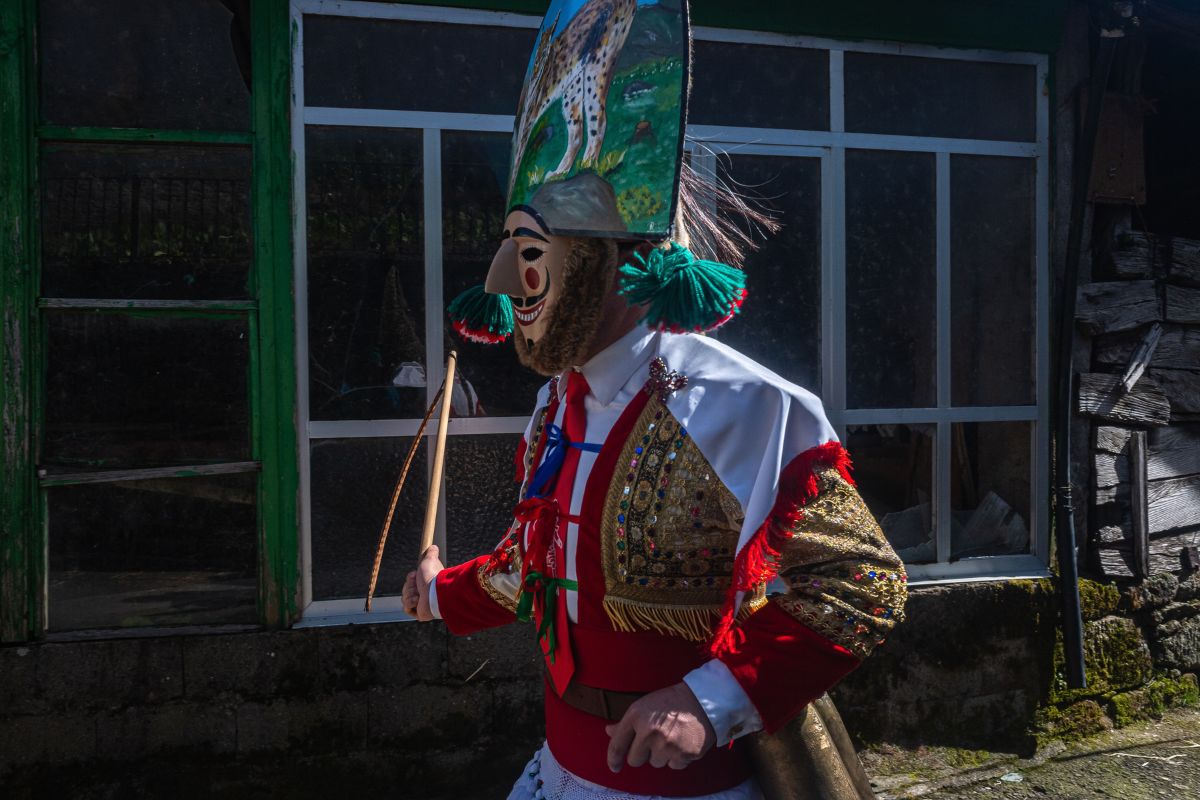
Peliqueiro running at Entroido in Laza.
The Boteiros of Viana do Bolo
The Boteiros are the protagonists of the Entroido of Viana do Bolo. They are characterized by colorful costumes, a carved wooden mask, and a wire and cardboard screen lined with colored paper strips. They lead the carnival processions, and open the way with wooden sticks and dancing jumps, ringing small bells hanging from their belt.
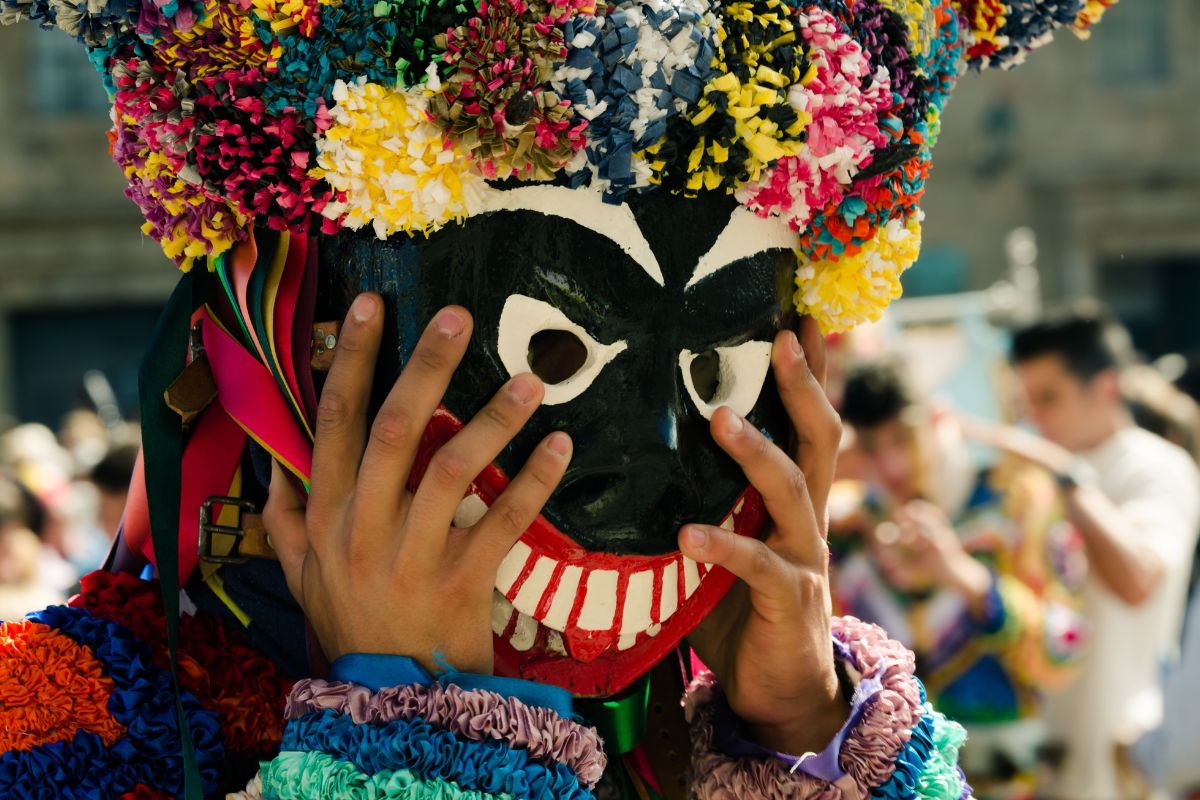
Boteiro at the Entroido of Viana do Bolo.
The Xenerais da Ulla
Already in the lands of the river and region of Ulla, between the provinces of A Coruña and Pontevedra, the Xenerais da Ulla must be highlighted. These characters are well distinguished because they wear uniforms, in the style of the Napoleonic era, as if they were going to a fantasy war. Mounted on horses that are also elegantly dressed, they carry many decorations and hats full of colorful plumes. The most fun are the “atranques,” meetings between generals from different places who engage in a dialectical battle in a tone of mockery and satire.
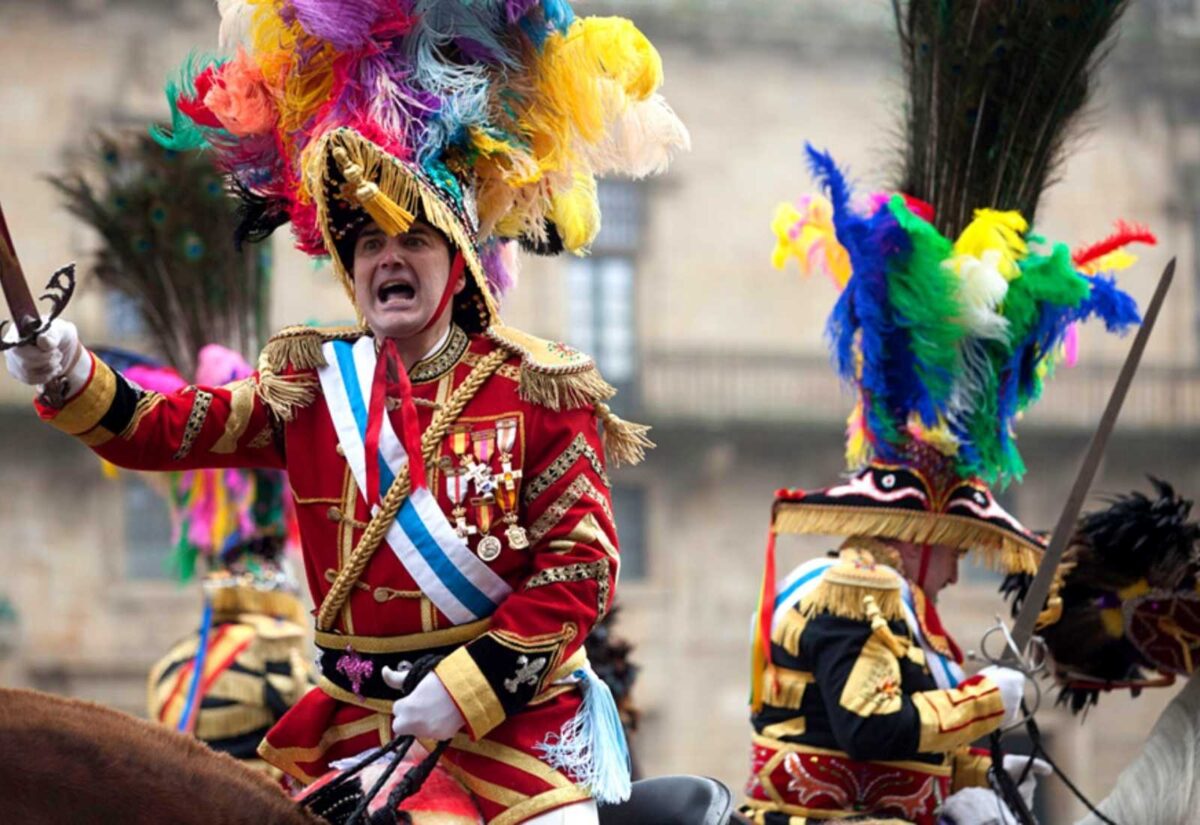
A Xeneral da Ulla, a very talkative character from the carnival of Galicia.
Other characters of Carnival in Galicia
In addition to those mentioned, in the province of Ourense, there is still much repertoire. The Felos of Maceda, the Vellarróns of Castrelo de Cima, the Mázcaras of Manzaneda, the Troteiros of Bande, the Pita of Eiroás, and the Vergalleiros of Sarreaus are other characters of the Carnival of the province.
The Volantes of Chantada and the Bear of Salcedo are typical in the province of Lugo. In the province of Pontevedra, the Merdeiros of Vigo, the Madamas and Galáns of Cobres, and the Ravachol of Pontevedra stand out. And in the province of A Coruña, the Choqueiros are notable. As you can see, on all the routes of the Camino de Santiago, you can experience the Carnival of Galicia, as well as savor it with the fabulous stews of the entroido and the gastronomy in Galicia.
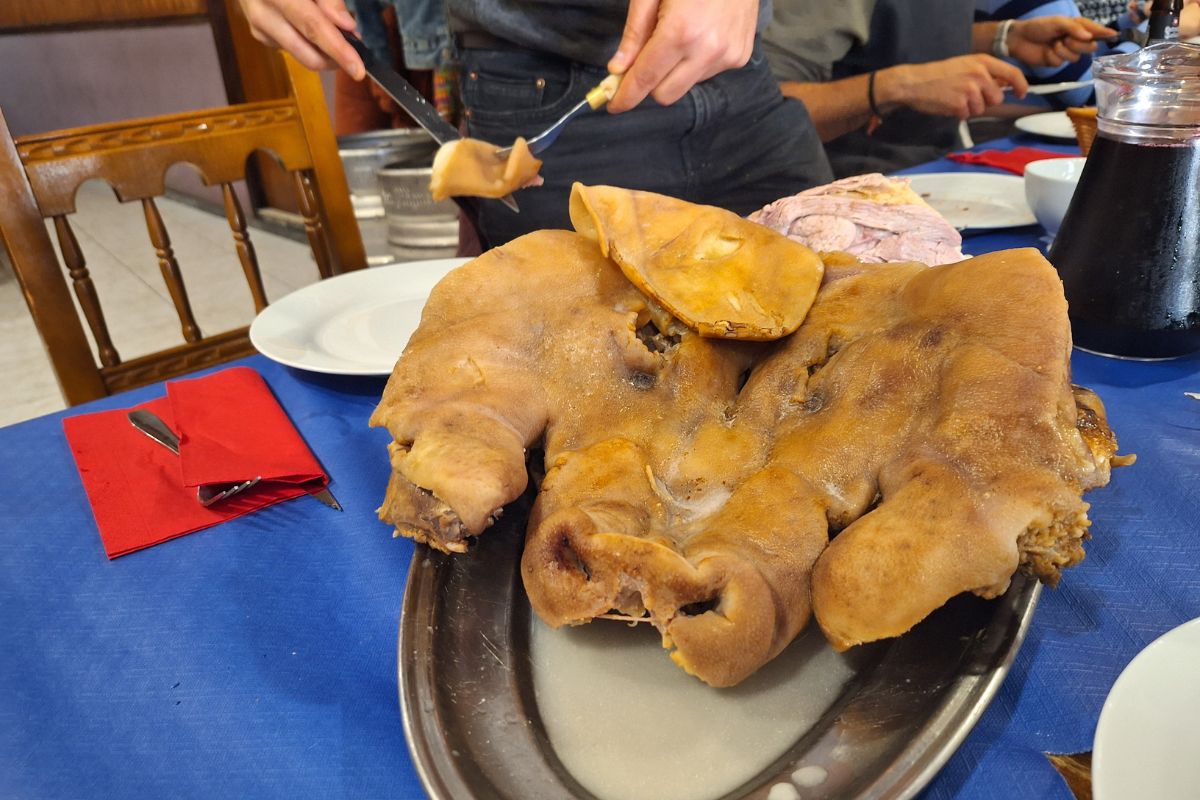
The pig, star of the Entroido stew and Galician gastronomy during Carnival.
Ah! And let’s not forget the Meco, a character made of rags that is hung during the festivities and burned at their conclusion. It represents evil and sins and serves as a satirical denunciation of civil and religious authority.
Enjoy the Camino de Santiago in winter
If you decide to do the Camino de Santiago in winter, in addition to enjoying all the good it offers, you can experience the Galician Entroido. Remember to go in disguise, even if only as an old pilgrim, otherwise, you will be pursued by these characters of the Carnival of Galicia. Dare to explore the Camino de Santiago in this special season, and turn your pilgrimage into an unforgettable adventure. Start your journey and let yourself be surprised by the magic of winter in Galicia!

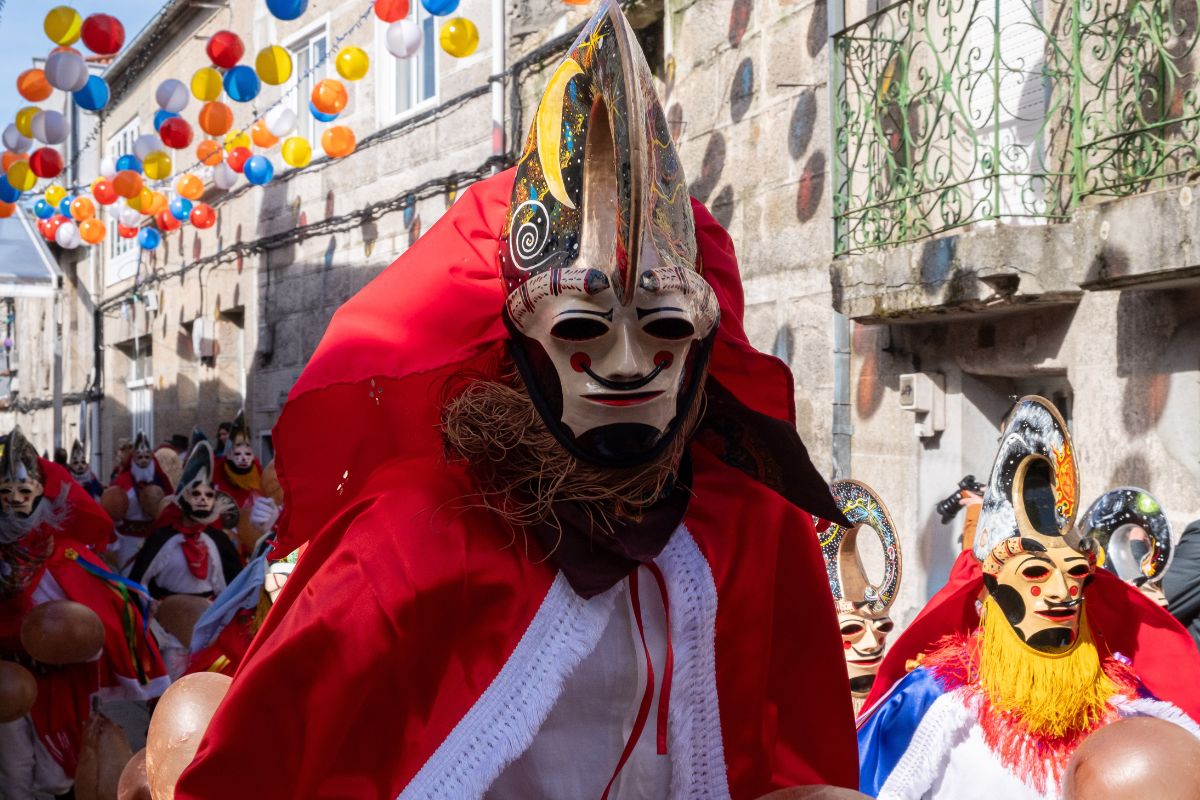


Leave A Comment